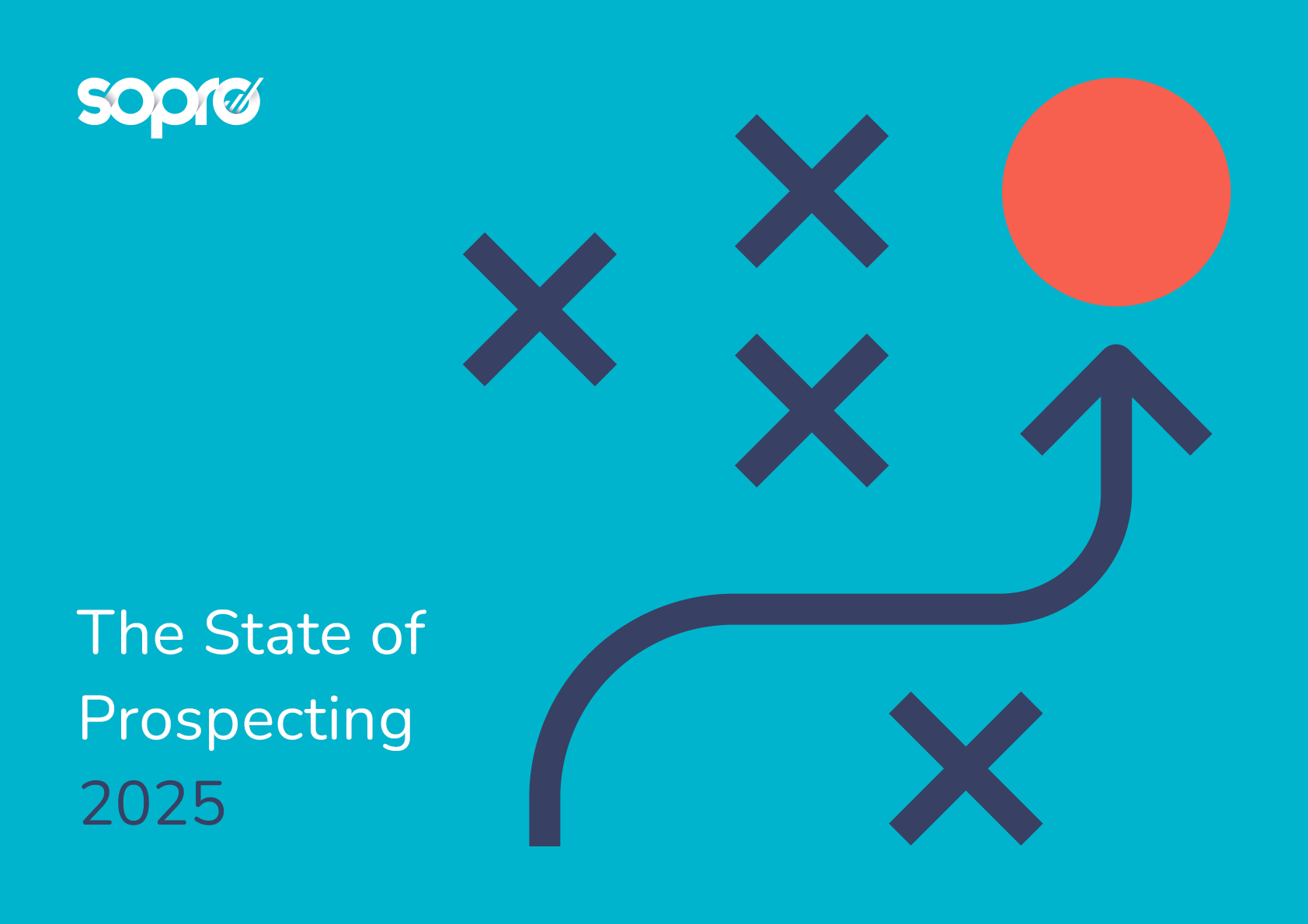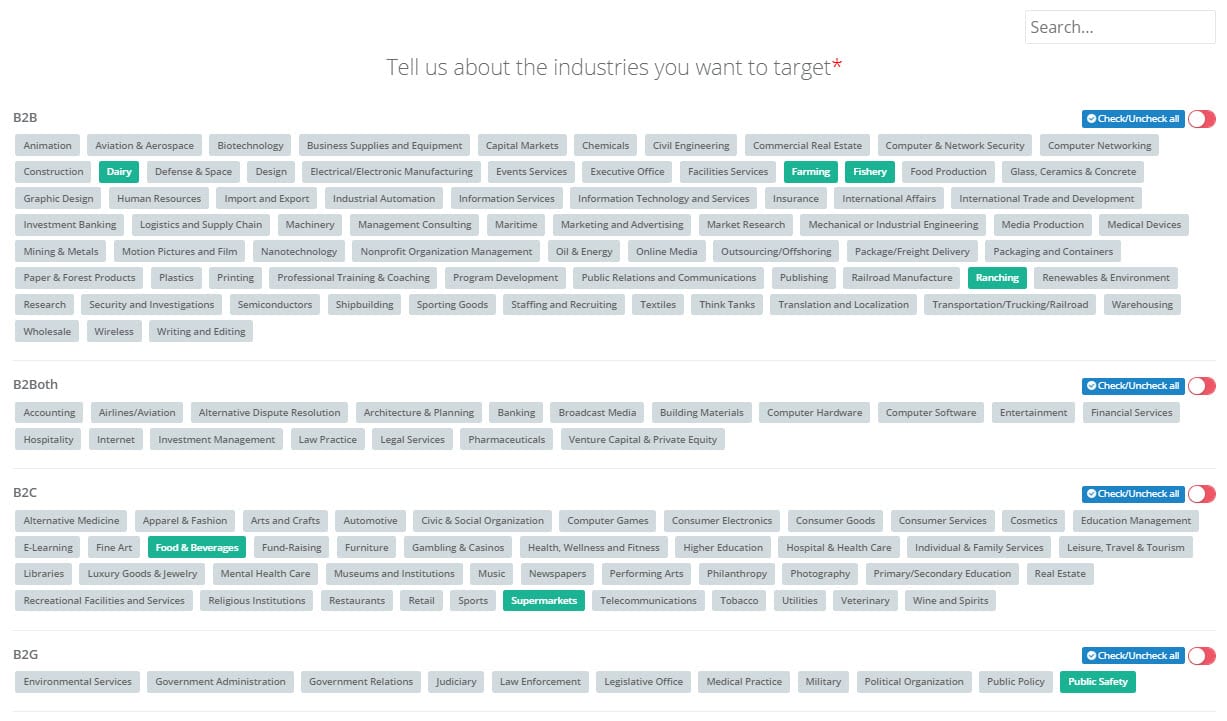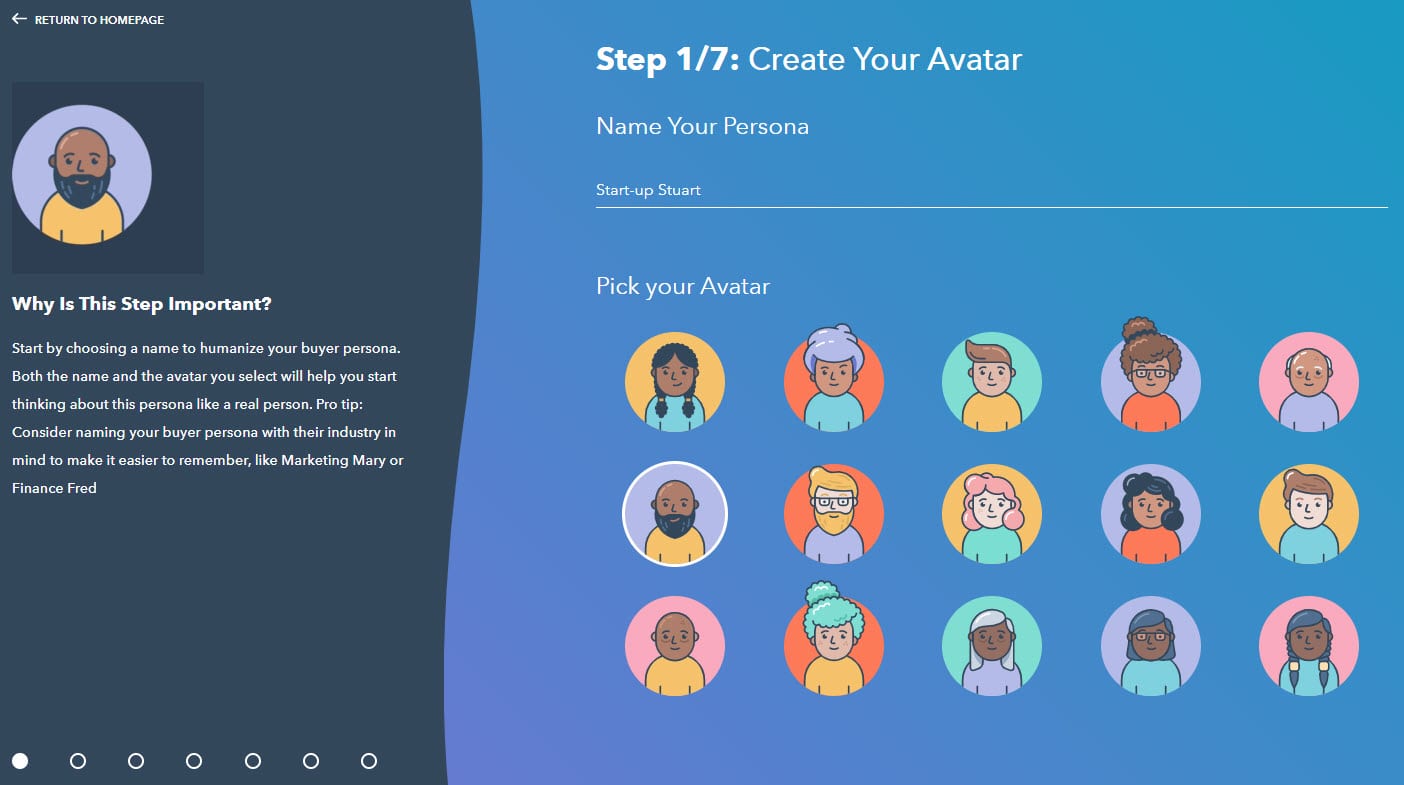How to create accurate B2B buyer personas (and why you should!)

Developing a set of B2B buyer personas can help to focus your marketing teams efforts and refine your selling process.
In this article, we’ll outline why you should create them, what to include, and how to go about building them.
Table of contents
What is a B2B buyer persona?
A buyer persona is a representation of a segment within your target market. Created using customer data and market research, they help marketing teams sell to specific customer segments.
B2B buyer personas will include many of the same elements as a B2C persona, but additional items focus on the job role as well as the person.
A buyer persona is just one concept in a whole array of marketing disciplines concerned with segmenting and targeting different sections of a market. Related terms include business persona, customer description, ideal customer profile (ICP), customer segmentation, market segmentation, and market mapping.

Ideal customer profiles and buyer personas: What’s the difference?
How to bring ICPs and personas together for better sales and marketing results.
Read the guideWhy is a buyer persona important in B2B marketing?
- Buyer personas have been shown to double email open rates, and increase the click-through rate by 500%
- Personalised emails based on buyer personas can drive 18 times more revenue than traditional broadcast emails
- When targeting cold leads, content based on personas increased engagement almost six times
- B2B lead generation based on buyer personas can lead to a shorter sales cycle (by 2-3 months)
- 72% of B2B buyers expect personalised engagement, tailored to their needs.
For more reasons to embrace buyer personas, read our post on the benefits of market segmentation.

The State of Prospecting 2025
An in-depth look at the tactics and trends shaping successful B2B prospecting in 2025.
Download nowMain components of a B2B buyer persona
The first step of creating a buyer persona is deciding which elements to include. This will depend on the data you have available, and specifics to your industry and product or service.
We’ll cover the most common sections below and suggest some additional options you may want to consider.
Demographic information
The first section covers the basics: who is this person? Remember this is a B2B persona though, so it’s probably not relevant that they like walks on the beach.
Basic elements to include:
- Industry
- Company size
- Job title or job seniority
To help flesh out the mental image of the customer profile, it can useful to include:
- Age (generally and age range)
- Highest level of education achieved
Finally, you need to know how and where to reach them:
- Social media accounts
- Other online spaces they can be reached
- Preferred method of communication
Hierarchy and buying power
How each persona impacts decisions will affect your messaging.
- Who do they report into?
- Are they a budget holder?
- What is their role in the decision-making process?
Decision drivers
This is all about identifying some of the levers you can pull. What matters to them?
- Job responsibilities
What are the main things they need to achieve to be a success in their role? This could be responsibilities such as generating leads, reducing churn, or upskilling the team.
- KPIs
How is success in the role measured? This could be items such as revenue generated, sales, leads, reduced customer churn.
Challenges and barriers
What are the challenges that stop them from realising the goals you identified in the previous section? Are current suppliers meeting their needs?
It can also be useful to identify barriers and fears this segment has. Is this segment resistant to your solution in some way?
How we help them
Finally, considering all of the above, how does your product or service help them to overcome their challenges and achieve their goals? Try to be specific.
Supporting attributes
Many business buyer personas are fleshed out with further details, helping to build a more detailed picture.
- Career details: What are their career goals? How long have they been in the industry?
- Lifestyle: What are their hobbies, interests and activities outside of work?
- Current solutions: What products and services do they currently use? What do they like and dislike about them?
- Previous objections: What frustrations have they had with products in your field?

Building a B2B buyer persona: gathering information
So how do you begin to create these profiles? Think about where you can find out about your customers, and start digging.
Research should be a mix of quantitative and qualitative, but the best starting point is quantitative. Good personas depend on good data, so don’t be afraid to ignore weak data.
Use your CRM data
The first place to look is your CRM, although what you’ll find and how helpful it will be depends on your CRM management.
If you have optimised your sales pipeline your reps should be asking relevant questions already. If they update the CRM as they pitch, you’ll have a much better starting point.
Look at the data on prospects in your pipeline, as well as your clients. This way you can see if the prospects you are marketing to align with the clients you sign.
Use prospecting data
If you using email prospecting as one of your lead generation channels, you’ll have an instant advantage. Having identified your ideal customers at the start, prospecting data is enriched with job titles, job seniority, company size, industry, and so on.
Not only that, but these people have definitely seen your messaging – you’ve contacted them directly – so the performance of your campaigns will be revealing. Investigate leads and sales by company size, industry, and job titles to start revealing cohorts.
Use web data
Google Analytics can provide useful information. Look at performance indicators (sessions, bounce rates, conversions) through the lens of different demographics to see how different demographics act on your site.
In-market segments can reveal topics your audience is interested in. If your personas fit into age brackets, looking at in-market segments by age can help flesh out the interests of different groups.
Use social data
Looking at your social media followers can help to reveal a more detailed picture of the demographics of your audience. Social media allows you to dig deeper, seeing what their wider interests are.
Join groups and engage social listening platforms to find common questions and pain points for different segments.
Use qualitative data
After building your buyer personas, engage in one to one interviews with existing customers to check and refine each group.
Qualitative research is the best way to understand the challenges and decision influences. You can do this by asking client services to arrange interviews, or by speaking to the sales and SDR teams.
How to identify and create different personas
So we’ve covered what should be included and where to look for the data, but how do you initially start to form customer profiles?
I can illustrate an example approach with some of the basic data available to businesses who use prospecting: job titles, job seniority, company size, and industry.
Examine your data for patterns
Initially, you’re searching for differences in performance. As company size data splits nicely into nine different groups, it’s a good place to start.

Within the companies you target, who are you more successful with? Pull out three or four groups to examine further.
Cross with another variable
Next, we want to examine the same dataset from a different angle. For example, we might want to see which job titles at larger companies are leading to sales.
However, Sopro prospected to around 32,000 unique job titles in 2020. There are too many variables to be useful. So if we group them into seniority, we can reduce it to five or six levels.
Crossing the five or six job groups with the eight company sizes, some potential buyer profiles should arise.
Develop five or six personas
Personas become useless if there are too many, so aim to have six at a maximum. At this point, they will be a rough sketch.
If your data has too many variables you end up creating too many personas. Many products are targeted at specific industries, but if your solution works for everyone, you have around 150 different industries to choose from.

Colour them in
Using client interviews, insights from customer-facing teams and social media analysis, fill in the other elements of your buyer persona.
You also can research specific clients that match certain personas.
Test and refine
Once you’ve made your personas, test them. Analyse your client base and assess whether the majority of customers can fit into the groups you have defined.
Buyer persona tools
If you’re lacking in design expertise, there are tools that will produce a good looking profile in minutes.
HubSpot: Make my Persona
Simple to use and flexible, interactive web tool from HubSpot.

Smaply: Persona mapping tool
Not as nicely designed as the HubSpot tool, but it is fully customisable.
Social bakers buyer persona template
As an adobe acrobat document, this template is less customisable than the others.
Once you know who you are targeting, we can build a market map of your total addressable market, for free. Map your market here.




Share